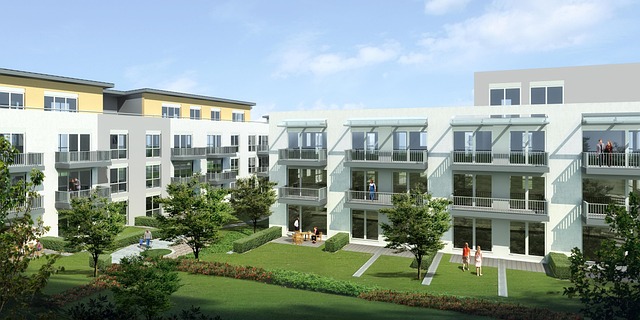Real-time 3D visualization is revolutionizing client experiences in architecture and design, bringing static exterior architectural renderings to life. This technology allows clients to virtually explore buildings, make informed decisions, and foster collaboration before construction begins. By creating dynamic, interactive models with advanced graphics and lighting simulations, architects provide immersive experiences that enhance understanding, save time, and increase client satisfaction through tangible previews of future spaces. Unlike static 2D drawings or pre-rendered visuals, real-time 3D presentations enable clients to adjust lighting, view materials, and explore design iterations in real-time, facilitating better communication and refined designs.
In today’s digital era, real-time 3D visualization is revolutionizing client experiences, fostering a vibrant tapestry of engagement and interaction. This article explores the transformative power of this technology, specifically focusing on its impact in the realm of exterior architectural rendering. We delve into case studies demonstrating how real-time 3D enhances presentations, creates immersive environments, and ultimately influences client decisions. Additionally, we examine technological advancements driving this field forward, along with best practices for seamless integration.
The Power of Real-Time 3D Visualization: Transforming Client Engagement
Real-time 3D visualization is a powerful tool that revolutionizes client experiences, especially in fields like architecture and design. By creating interactive, three-dimensional models of concepts and designs, professionals can offer clients an immersive journey into their future projects before they even break ground. This technology brings static exterior architectural renderings to life, allowing clients to walk virtually through buildings, explore different design options, and make informed decisions.
The impact is significant; it enhances client engagement, fosters better communication, and leads to more satisfying outcomes. With real-time visualization, architects and designers can quickly iterate and refine their work based on client feedback, ensuring the final product aligns with their vision and expectations. This level of interactivity and immersion adds a new dimension to client presentations, making complex designs accessible and captivating.
– Exploring the benefits and potential impact on client experiences.
Real-time 3D visualization offers a transformative opportunity to enhance client experiences, particularly in industries like architecture and design. By leveraging advanced graphics technologies, professionals can now create dynamic, interactive models that bring concepts to life. This innovative approach allows clients to immerse themselves in virtual environments, visualizing exterior architectural renderings with remarkable realism and detail.
The impact on decision-making processes is significant. Clients gain a deeper understanding of proposed designs, enabling more informed choices. Real-time visualization facilitates quick iterations and adjustments, fostering collaboration between designers and clients. This efficient workflow not only saves time but also enhances overall client satisfaction by providing a tangible, experiential preview of the final product.
Exterior Architectural Rendering: A Case Study
Exterior architectural rendering is a powerful tool that transforms two-dimensional blueprints into three-dimensional visual masterpieces, offering clients a compelling glimpse into their future spaces. This technology enables architects and designers to showcase the full potential of a project, from the intricate details of each facade to the overall urban context. By employing real-time 3D visualization techniques, professionals can create dynamic, interactive models that allow clients to explore and experience their designs as if they were already constructed.
In practice, exterior architectural rendering involves utilizing advanced software to render highly realistic images or animations based on digital building models. This process encompasses not just the structural elements but also material textures, lighting effects, and even environmental factors like weather conditions. As a result, clients gain a deeper understanding of how their buildings will look and function in the real world, fostering confidence and enabling informed decisions throughout the design and construction phases.
– Delving into how real-time 3D technology enhances architectural presentations.
Real-time 3D visualization technologies have revolutionized the way architects present and communicate their designs, particularly in the realm of exterior architectural rendering. By leveraging advanced graphics processing and dynamic lighting simulations, professionals can now create immersive digital twins of buildings and structures that closely resemble their physical counterparts. This allows clients to virtually walk through and experience future spaces, enhancing understanding and appreciation of design concepts.
In contrast to traditional static 2D drawings or even high-fidelity pre-rendered visuals, real-time 3D presentations offer a dynamic and interactive experience. They enable clients to adjust lighting conditions, view different materials and finishes, and explore various design iterations all in real time. This level of interactivity not only fosters better communication between architects and clients but also helps identify potential issues or improvements early in the design process, ensuring more refined and tailored end products.
Real-time 3D visualization is a game-changer in client engagement, offering immersive experiences that bridge the gap between concept and reality. As seen in our case study on exterior architectural rendering, this technology revolutionizes the way architects present and clients interact with designs, fostering a deeper understanding and appreciation for space. By embracing real-time 3D, businesses can elevate their client interactions, ensuring a competitive edge in a vibrant market where visual storytelling is key to success.
